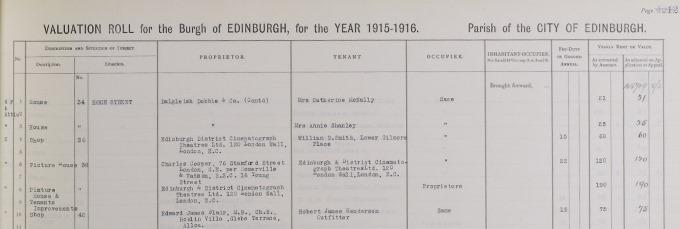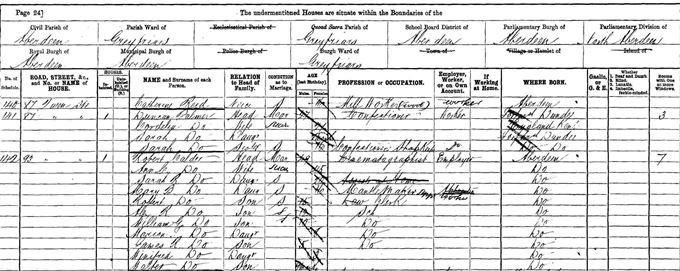During the first half of the twentieth century, cinema came to form a significant presence in the life of most Scots, whether they lived in the city or countryside; according to academic Trevor Griffiths, by 1950-1 the average person attended the pictures 36 times a year ('The Cinema and Cinema-Going in Scotland, 1896-1950'). The introduction of films or moving pictures was immediately popular, and they were shown in many places from churches to halls at the start of the twentieth century, often with travelling cinematographers bringing the films to those in remote areas.
The first moving picture was shown in Scotland on 13 April 1896, in the Empire Palace Theatre, Edinburgh; the first Scottish film ‘The Departure of the Columba from Rothesay Pier’ (1896) was screened at The Skating Palace in Glasgow the same year.
By 1915, the same year William Fox founded the Fox Film Corporation in the USA, 119 purpose-built cinemas or picture houses from Elgin to Edinburgh were listed in the Valuation Rolls.
In January 1914 the Cameo cinema opened in Tollcross, Edinburgh, as the King's Theatre, and appears for the first time in the Valuation Rolls in 1915. The premises were rented by the Edinburgh and District Cinematograph Theatres Ltd. from the owner, Charles Cooper.

Valuation roll listing the Cameo Cinema in Edinburgh, 1915.
Crown copyright, National Records of Scotland, Valuation Roll, 1915, VR100/323/321.
Not only was cinema a great form of entertainment for members of the public, it was also a good source of employment, creating positions for projectionists (also known as cinematographers at the time), music directors, ushers, ticket sellers and cleaners. Women formed a significant part of the work force from cinema’s earliest days in Scotland. According to Glasgow University, at Cinema House, in Renfield Street, Glasgow, for example, women were employed there in 1911 as cleaners and musicians. During the first world war women became even more sought after, with cinemas advertising for many different roles including female managers. One area where their absence is notable, however, is as cinematographers.
Cinema was to evolve over the first two decades of the twentieth century with the unexpected end of the silent picture and the introduction of ‘the talkies’. The 1910s and 1920s witnessed experimentation in the mixing of audio and animation; orchestral music was sometimes played alongside the moving picture or an unseen actor would read a poem or other script as the movie played. As cinema houses moved quickly to show this new style of film, it brought a permanent end for many jobs. By 1931 some 8,000 professional musicians across Glasgow had become unemployed and only 2 cinemas in Edinburgh operated with orchestras playing alongside the movie, according to Glasgow University research).
Moving pictures and films were not only shown in the big cities but they spanned right across the country. Robert Calder was a man who brought cinema to those further afield. Originally employed as a ploughman, joiner and a church beadle in Aberdeenshire, he formed a touring party and first brought a 'cinematography exhibition' to Shetland in 1897. He returned twice a year with his ‘Famous Cinematograph and Pictorial Concert Party’, during which he would show films such as the funeral of Queen Victoria, the Messina earthquake and the Paris exhibition, and last visited in 1910. In 1912 he went to Fraserburgh to manage a cinema before returning to work as a joiner. He died on 28 August 1928 aged 77.

1901 census listing Robert Calder as a ‘cinamatographist’
Crown copyright, National Records of Scotland, 1901 Census Returns, 168/1/28/24
Please see our guides on valuation rolls and census returns for help searching these records.
Further information can be found at The early cinema in Scotland research project website.


